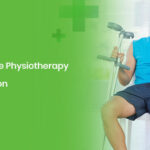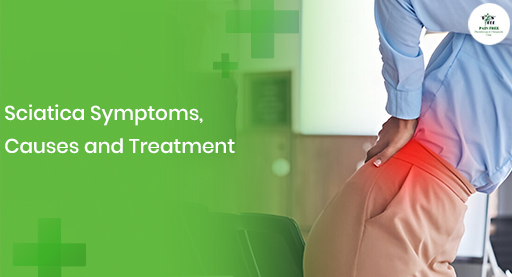Sciatica Symptoms, Causes and Treatment
Ever felt a lightning bolt shoot down your leg outta nowhere? Or maybe you’ve tried standing up, only to feel like your lower back had other plans? Yeah, sounds like your body might be waving a big red flag called sciatica. It’s not just a fancy term chiropractors throw around, it’s a real pain (literally) that can sneak up and stick around like a bad habit.
Let’s face it: back pain’s annoying enough. But when it messes with your legs, movement, and peace of mind? That’s a whole different ballgame. Buckle up as we dive into the wild world of Sciatica Symptoms, Causes and Treatment no jargon, just straight talk.
What Exactly Is Sciatica?
To put it simply, sciatica is a pain that travels along the path of the sciatic nerve, which runs from your lower back through your hips, buttocks, and down each leg. It usually affects just one side of your body. And no, it’s not a condition in itself it’s a symptom of something else going wrong.
Sciatica Symptoms, Causes and Treatment: Breaking It All Down
Sciatica Symptoms: When Your Body Starts Shouting
Your body isn’t shy when it comes to sciatica. In fact, it screams just not always in words. Here’s what to look out for:
Common Sciatica Symptoms
- Shooting pain: Starts in your lower back or buttock and zips down the leg.
- Tingling or numbness: That “pins and needles” feeling? Yup, it’s on the list.
- Muscle weakness: Your leg might feel like it’s on a coffee break when you need it most.
- Worsens with movement: Sitting too long? Standing up? Coughing? Everything’s suddenly a trigger.
- One-sided pain: It usually sticks to one leg, but boy does it make itself known.
Fun fact: Some people describe the pain as a burning or electric shock. Not the kind of “spark” anyone’s looking for, right?
Sciatica Causes:
So what’s poking the bear here? The sciatic nerve doesn’t just freak out for no reason.
Main Culprits Behind Sciatica
- Herniated disc: This is the big boss. When a disc slips or bulges, it presses on that poor sciatic nerve.
- Spinal stenosis: Narrowing of the spinal canal less room, more pain.
- Degenerative disc disease: The wear and tear of life takes its toll on your spine.
- Spondylolisthesis: A fancy term for a vertebra slipping over another.
- Piriformis syndrome: When a muscle in your butt cheek goes rogue and squishes the nerve.
- Pregnancy: Yep, baby bumps can mess with nerves too.
- Injuries or trauma: Falls, car accidents, or awkward twists can all spark sciatica.
Let’s not forget lifestyle. Sitting too much, skipping workouts, or carrying extra weight? Those all raise your risk.
Sciatica Symptoms, Causes and Treatment: What You Can Actually Do About It
Alright, so the pain’s real and the causes are many. The good news? You’ve got lots of them.
Home Remedies for Mild Sciatica
Sometimes, the best medicine is patience and a little TLC. Try these first:
- Heat and cold therapy: Alternate between ice packs and heating pads.
- Gentle stretches: Focus on hamstrings, hips, and lower back.
- Over-the-counter meds: Ibuprofen or naproxen can ease the inflammation.
- Keep moving: It might be tempting to veg out, but light activity actually helps.
Medical Treatments for Persistent Sciatica
If the pain’s holding on tighter than your favorite pair of jeans, it’s time to call in the pros.
Non-Surgical Treatments
- Physical therapy: A tailored plan to strengthen, stretch, and realign.
- Prescription medications: Muscle relaxants, anti-inflammatories, or nerve meds like gabapentin.
- Steroid injections: A shot of relief right where it hurts.
- Chiropractic adjustments: Realigning your spine could relieve pressure.
- Acupuncture or massage therapy: Hey, Eastern medicine’s got skin in the game too.
Surgical Options (When All Else Fails)
Surgery’s usually the last resort, but it’s there if:
- Your pain’s not budging after months of treatment.
- You’re dealing with bladder or bowel issues (which is an emergency).
- You’ve got a major weakness or numbness.
Surgical routes include:
- Discectomy: Removing the herniated part pressing the nerve.
- Laminectomy: Removing bone to ease the pressure.
FAQs About Sciatica Symptoms, Causes and Treatment
Q: Can sciatica go away on its own?
A: Yup, in many cases it does! Most people feel better in a few weeks with conservative care.
Q: How do I know if it’s sciatica and not just regular back pain?
A: Sciatica usually involves leg pain that follows a nerve path, often with numbness or tingling.
Q: Is walking good or bad for sciatica?
A: Walking is actually great as long as it doesn’t worsen your symptoms. It keeps blood flowing and muscles active.
Q: Can sitting too long cause sciatica?
A: It sure can. Sitting puts pressure on your spine, especially if you slouch or sit unevenly.
Q: Is sciatica permanent?
A: Not usually. Most cases resolve with proper care, though some folks do experience recurring flare-ups.
Don’t Ignore the Signs Your Nerve’s Trying to Tell You Something
Here’s the deal: sciatica isn’t something you should just grin and bear. Sure, it might calm down on its own, but it’s also your body’s way of waving a red flag. Whether it’s a bulging disc, a tight muscle, or just years of ignoring your posture, Sciatica Symptoms, Causes and Treatment deserve your attention.
So don’t wait for things to spiral. Start with the small stuff: stretch more, sit less, and listen to your body. If the pain doesn’t budge, bring in the experts. There’s no gold star for suffering in silence.
Final Thoughts
Pain’s not just a nuisance it’s information. Sciatica might sound scary, but with the right approach, it’s totally manageable. Whether it’s caused by a slipped disc, tight muscle, or sneaky spine condition, there’s a path forward.
Keep this guide handy, listen to your body, and most importantly don’t let sciatica call the shots. From recognizing Sciatica Symptoms, Causes and Treatment to exploring your recovery options, you’re now one step closer to feeling like yourself again. Cheers to that pain-free stride!









